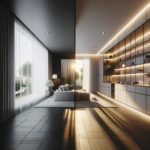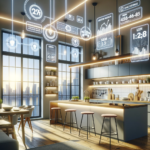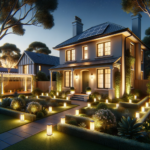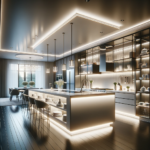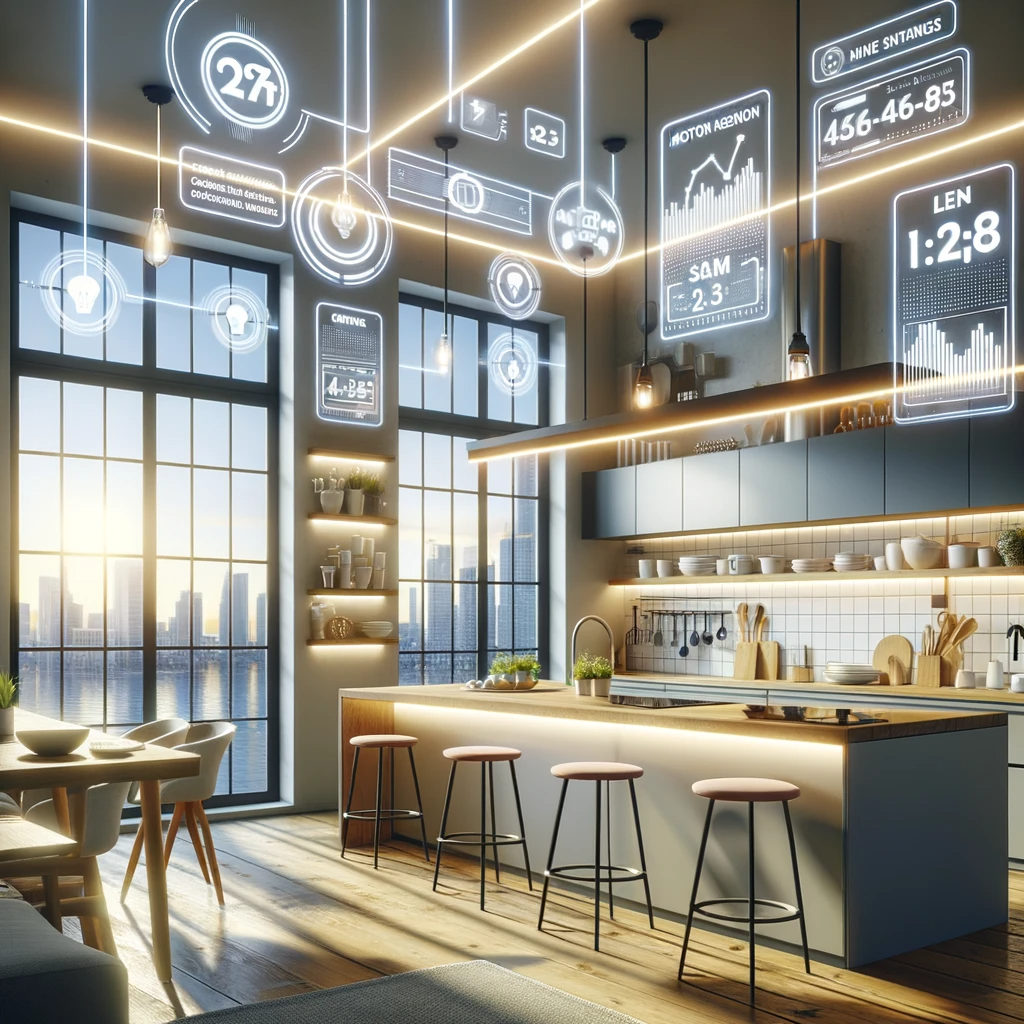Introduction
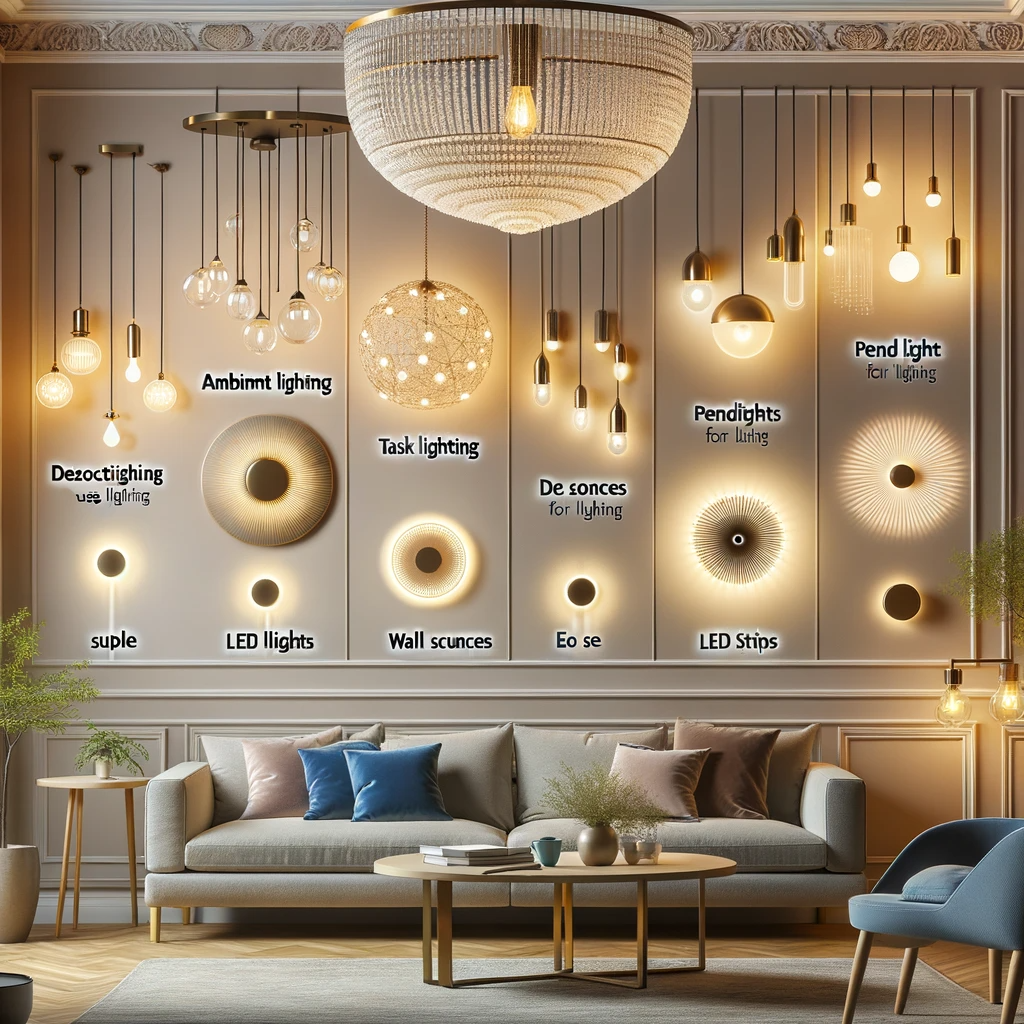
Shaping Spaces with Illumination
Indoor lighting plays a pivotal role in transforming a mere structure into a comfortable and functional space. It has the power to shape our perception of the environment, influence moods, and enhance the overall atmosphere. Adequate and well-designed lighting can make a significant difference in how we experience different areas of our homes or workplaces.
The Trio: Ambient, Task, and Accent Lighting

To better understand indoor lighting, let’s explore the three primary types: ambient, task, and accent lighting. Each type serves distinct purposes and contributes to creating various effects within a space.
Ambient Lighting
Definition: Ambient lighting provides overall illumination in a space, creating a comfortable and inviting atmosphere. Purpose: The purpose of ambient lighting is to ensure general visibility throughout a room, allowing people to move around safely and perform various activities.
Common sources: Overhead fixtures such as ceiling-mounted lights and chandeliers are popular sources of ambient lighting in both residential and commercial spaces. Other options include pendant lights, track lighting, and recessed lights.
Characteristics: Ambient lighting typically produces soft and diffused light that fills the entire room evenly. This type of light avoids harsh shadows or glare, contributing to a cozy ambiance.
Effects on atmosphere: By providing a warm and gentle glow, ambient lighting helps create an inviting environment. It sets the tone for relaxation or socialization, making the space more enjoyable for occupants.
Soft and diffused light: Soft light creates a soothing effect similar to natural daylight, making people feel calm and comfortable in their surroundings. Diffusion minimizes direct glare or sharp contrasts between lighted areas.
Uniform illumination: Ambient lighting ensures consistent brightness levels across the entire room. This uniformity allows occupants to move freely without encountering dark spots or overly bright areas.
Task Lighting
Providing Focused Illumination for Specific Tasks
Task lighting serves a crucial role in illuminating specific areas or tasks, ensuring optimal visibility and performance. It refers to lighting fixtures strategically placed to provide direct light where it is needed most. By focusing light on particular work surfaces or areas, task lighting helps individuals perform activities with ease and precision.
Examples of Spaces Requiring Task Lighting
Spaces that require task lighting vary greatly, but commonly include kitchen countertops, study desks, reading nooks, and craft tables. In the kitchen, for instance, proper lighting is essential when preparing meals or cutting ingredients on countertops.
Study desks necessitate adequate illumination for reading, writing, or working on assignments. By understanding the specific tasks performed in various spaces, one can identify the need for task lighting in each area.
Various Options for Task Lighting Fixtures
Numerous options are available when it comes to task lighting fixtures. Desk lamps are a popular choice for providing focused illumination directly onto a work surface such as a desk or table.
Under-cabinet lights offer a practical solution in kitchens or workshops by installing lights beneath cabinets to brighten up countertops. These fixtures come in diverse styles and designs to suit different aesthetics and functional requirements.
Adjustable Features for Precise Light Direction
Task lighting fixtures often come with adjustable features that allow users to direct light precisely where it is needed most. For example, desk lamps may have flexible necks that can be angled towards specific areas of focus on a workspace. This adjustability ensures maximum productivity by minimizing shadows and providing targeted illumination based on individual preferences.
Brighter Intensity Enhancing Visibility
Another essential characteristic of task lighting is its brighter intensity compared to ambient or accent lighting. The increased brightness ensures optimal visibility during focused activities, helping individuals perform tasks more effectively.
Whether it is reading small print, working on intricate projects, or chopping vegetables, task lighting provides the necessary brightness to enhance visibility and reduce eye strain. Remember to continue paragraph structure for the next subtopics.
Accent Lighting: Highlighting Architectural Features and Objects
Accent lighting plays a crucial role in emphasizing architectural features or objects within a space. It creates visual interest and draws attention to specific elements, adding depth and character to the overall design. By strategically placing accent lights, one can enhance the aesthetics of a room and create focal points that capture attention.
Placement Strategies for Accent Lights
To effectively utilize accent lighting, careful consideration should be given to its placement within the space. Wall-mounted sconces are an excellent choice for illuminating artwork or decorative elements such as tapestries or wall sculptures.
These fixtures provide both ambient and accent lighting, casting a soft glow on the wall while drawing attention to the featured piece. Puck lights or spotlights are ideal for highlighting specific objects like sculptures or plants.
These compact fixtures can be discreetly placed on shelves or used to illuminate indoor gardens, directing focused light onto the desired areas. By positioning accent lights strategically, one can create a captivating display that showcases the unique qualities of these objects.
Effects Achieved through Accent Lighting Techniques
Accent lighting techniques produce remarkable effects that contribute to an aesthetically pleasing environment. The interplay between light and shadow adds drama and depth to a room’s atmosphere.
By casting shadows against walls or other surfaces, accent lighting creates visually striking contrasts that enhance the overall ambiance. Another effect achieved through accent lighting is the enhancement of depth perception by creating layers of light within a space.
By balancing different intensities of light, varying levels of brightness can be established throughout the room, giving it dimensionality and bringing out its unique architectural features. Accent lighting serves as an essential tool in interior design by drawing attention to architectural elements or objects within a space.
Through careful placement strategies using wall-mounted sconces and spotlights/puck lights, one can create visual interest and focal points, highlighting the distinctive qualities of these elements. Additionally, accent lighting techniques such as playing with light and shadow and establishing layers of light contribute to a visually captivating and aesthetically pleasing environment.
Technology Advancements in Indoor Lighting

Bringing Innovation to Illumination
Smart home automation systems control indoor lights and revolutionize the way we interact with our lighting. These systems provide convenient and efficient ways to manage lighting levels, colors, and schedules using advanced technology.
Illuminating Benefits of Smart Indoor Lighting Systems
Smart indoor lighting systems offer a multitude of benefits that enhance our daily lives. Firstly, they increase energy efficiency by allowing us to control and optimize lighting usage based on our needs.
With features like motion sensors and timers, lights can be automatically turned on or off when an area is occupied or when natural light is sufficient. Moreover, smart indoor lighting provides customization options that add flexibility and personalization to our living spaces.
By adjusting the color temperature and intensity of the lights, we can create different moods for various activities – warm tones for relaxation or cool tones for focus. Additionally, these systems contribute to home security by enabling remotely controlled lighting even when we are away.
This feature allows us to simulate occupancy, deterring potential intruders. Furthermore, integration with voice assistants or smartphone apps makes controlling the lights effortless and convenient.
Technology advancements in indoor lighting have opened up exciting possibilities for enhancing our living environments. With smart home automation systems offering streamlined control, energy efficiency gains, customization options, and improved security measures; we have more freedom than ever before in creating the perfect ambiance for every room of our homes.
Embracing these innovations allows us to curate spaces that cater to our needs while minimizing energy consumption – a win-win situation for both comfort and sustainability.
